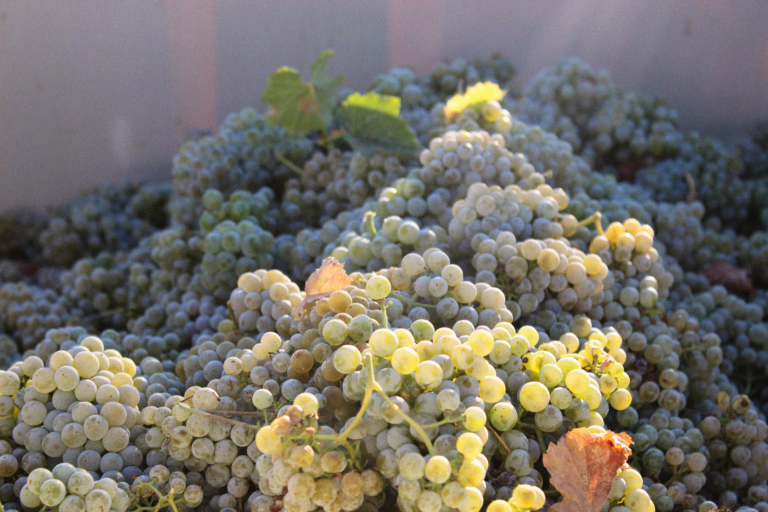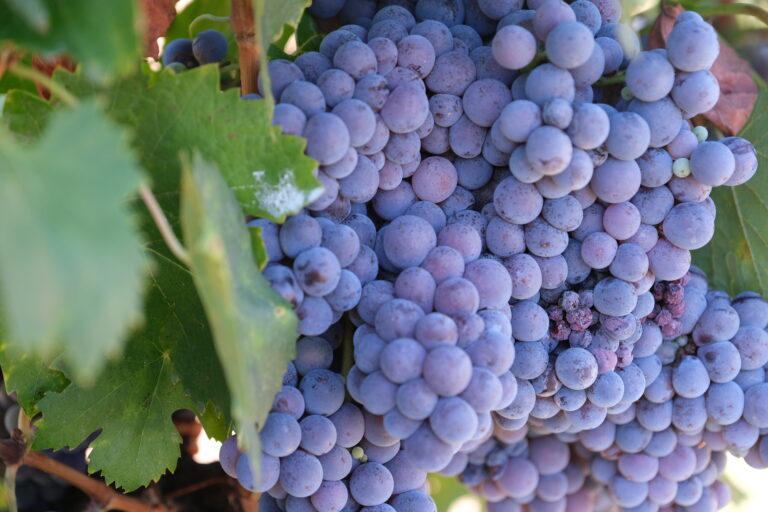In the vast world of wine, the intricate tapestry of flavors is woven with the diversity of grape varieties, each holding a unique story that contributes to the global viticultural landscape. This blog post invites you to embark on a fascinating journey, unveiling the hidden gems of indigenous grape varieties—often overlooked but essential in shaping the identity of wines. Beyond their individual characteristics, these varieties are a testament to the rich tapestry of diversity in vineyards across the globe. Each grape, thriving in its specific corner of the world, not only adds vibrancy to the wine world but also reflects the distinctive terroirs and cultures that passionately nurture these indigenous vines. Join us as we delve into the significance of these often underestimated varieties and discover the cultural and historical importance they bring to the world of winemaking.
Defining Indigenous Grape Varieties
Understanding what defines a grape variety as ‘indigenous’ is fundamental to appreciating their role. It goes beyond mere genetics; indigenous grapes are deeply intertwined with the history and identity of specific regions. This section intricately dissects the criteria that make a grape indigenous, considering not only genetic markers but also the historical contexts that shaped these varieties. The importance of preservation becomes even more apparent as we delve into the intricate relationship between these grapes and the cultural tapestry of their origin. By unraveling these complexities, we gain a profound insight into why these varieties are not just grapes but living expressions of a region’s heritage.
Delving into the historical roots of indigenous grape varieties, this subsection goes beyond the surface, exploring the challenges faced in preserving these varieties. The journey involves navigating a delicate dance between tradition and modernity in winemaking. The struggle lies not only in safeguarding the genetic diversity of these grapes but also in ensuring that the traditions and stories woven into their cultivation are passed down through generations. As we navigate this intersection, we discover that the preservation of indigenous grape varieties is not just a task for the present; it’s a commitment to the legacy of the past and the promise of the future.
Famous Indigenous Varieties
Unveiling the rich tapestry of the wine world, this section embarks on a journey to profile key indigenous grapes from various regions. From the Nebbiolo of Piedmont to the Assyrtiko of Santorini, each grape variety is a living testament to the geological, climatic, and cultural nuances of its birthplace. By delving into the specificities of these grapes, we uncover the stories etched into their DNA, connecting us to the landscapes and traditions that shaped them. This exploration transcends the realms of viticulture, offering a sensory voyage into the heart of diverse winemaking regions.
Beyond the geographical nuances, indigenous grape varieties contribute unique characteristics to winemaking, shaping the flavor profiles that make each wine distinct. This subsection dissects the sensory intricacies of these grapes, unraveling the aromatic symphonies, the structural complexities, and the palate journeys they offer. From the robust tannins of Tannat to the crisp acidity of Verdejo, each indigenous variety brings something unparalleled to the winemaking table. Understanding their unique contributions not only enhances our appreciation of individual wines but also elevates the discourse around the importance of preserving these varieties for the future of oenology.
The Role of Indigenous Grapes in Winemaking
Traditional winemaking techniques with indigenous grapes form the backbone of the oenological narrative, reflecting the cultural heritage and craftsmanship of winemakers. This subsection delves into the intimate connection between these grapes and the time-honored practices that have been passed down through generations. From hand-harvesting to age-old fermentation methods, we uncover the rituals that define the winemaking process for indigenous varieties. These techniques, often intertwined with the cultural fabric of winemaking regions, showcase the profound link between tradition and the expression of terroir in every bottle.
Beyond the vineyard to the bottle, the influence of indigenous grapes on flavor profiles is profound and multifaceted. Each grape variety imparts distinctive aromatic and taste elements, creating a spectrum of flavors that captivate the senses. This subsection dissects the impact of indigenous grapes on the flavor profiles of wines, exploring the nuanced interplay of fruit characteristics, terroir-driven nuances, and the winemaker’s finesse. From the earthy notes of Sagrantino to the tropical exuberance of Verdejo, understanding how these grapes shape the final taste experience enriches our appreciation of the intricate artistry involved in crafting wines from indigenous varieties.
Conservation and Revival Efforts
Preserving indigenous grape varieties faces a myriad of challenges, from climate change threats to the encroachment of more commercially viable grape varieties. This subsection uncovers the hurdles in maintaining the biodiversity of indigenous grapes, delving into issues like genetic erosion and the dwindling acreage dedicated to these varieties. As these grapes often thrive in specific microclimates, their vulnerability to external pressures underscores the urgent need for conservation efforts.
Initiatives and projects aimed at the revival of indigenous grape varieties constitute a beacon of hope for preserving viticultural diversity. This section sheds light on the inspiring endeavors led by winemakers, organizations, and communities to safeguard these gems. From vineyard conservation programs to partnerships with research institutions, the collaborative efforts to revive indigenous grapes showcase a collective commitment to ensuring the longevity of these varieties. By exploring these initiatives, we gain insight into the tangible steps being taken to secure the future of indigenous grapes and celebrate the resilience of these hidden treasures in the world of wine.
Indigenous Grapes and Terroir
The intrinsic connection between indigenous grapes and their terroir is a defining aspect of their character. This subsection delves into the intricate relationship, exploring how environmental factors, such as soil composition, climate, and topography, shape the distinctive traits of these grapes. From the mineral nuances imparted by a rocky terroir to the influence of a maritime climate on grape development, understanding this connection enhances our appreciation for the terroir-driven qualities of wines crafted from indigenous grapes.
Indigenous grapes act as storytellers of the land, expressing the unique terroirs of their respective regions. This part of the blog post delves into the specific ways these grapes mirror their surroundings. Whether it’s the bold, sun-soaked flavors of a grape thriving in a warm, Mediterranean climate or the crisp acidity derived from a cool, mountainous terroir, we unravel the intricate dance between indigenous grape varieties and the landscapes they call home. Through exploring these expressions, we gain a deeper understanding of the intricate interplay between grape and terroir, appreciating how each sip encapsulates the essence of a particular place and its viticultural heritage.
Tasting and Experiencing Indigenous Wines
Navigating the tasting journey of wines crafted from indigenous varieties requires a nuanced approach. This section offers a guide, exploring the sensory aspects unique to these grapes. From the distinctive aromas that may evoke the surrounding landscapes to the nuanced flavors that echo the grape’s terroir, we unravel the intricacies of tasting indigenous wines. For instance, savoring the earthy undertones of an Agiorgitiko from Greece or the floral notes in a Friulano from Italy provides a sensorial adventure that goes beyond conventional tasting experiences.
Pairing indigenous wines with food becomes an art form, and this subsection provides insights into the perfect culinary companions. Delve into the world of gastronomic harmony by exploring pairings such as the robust Aglianico from Southern Italy with hearty Mediterranean lamb dishes or the vibrant Albariño from Spain with fresh seafood. Understanding the flavor profiles of indigenous grapes allows enthusiasts to elevate their dining experiences, unlocking the full potential of both the wine and the culinary creation.
In practice, consider the velvety texture and black fruit notes of a Mavrodaphne from Greece complementing a rich chocolate dessert, or the bright acidity of a Verdejo from Spain providing a refreshing counterpoint to citrus-infused dishes. The diverse range of indigenous grapes offers a playground for culinary creativity, allowing for endless possibilities in creating memorable and harmonious pairings.
The Market for Indigenous Grape Wines
Current trends and consumer interest in indigenous grape wines have been on a steady rise. Discerning wine enthusiasts are increasingly drawn to the allure of unique flavors and cultural narratives embedded in these wines. As consumers seek authenticity and diversity, indigenous grape varieties have become focal points in the wine market. This subsection explores the burgeoning trends, from the growing popularity of lesser-known varieties to the demand for wines that tell a story of their origin.
The role of indigenous wines in the global market is pivotal, contributing to the diversification and enrichment of the wine industry. Wineries and regions that champion indigenous varieties carve a distinct niche, attracting consumers who appreciate the connection between wine and terroir. Moreover, these wines often become ambassadors of their regions, showcasing the unique viticultural heritage and cultural identity of the areas where the grapes have deep roots. The global wine market, recognizing the value of diversity, continues to embrace and celebrate the distinctiveness offered by indigenous grape wines, shaping a more dynamic and inclusive landscape.
The Future of Indigenous Grape Varieties
The potential for new discoveries and increased popularity of indigenous grape varieties marks an exciting chapter in the world of wine. As technology advances and global awareness grows, wine enthusiasts and researchers alike are exploring remote vineyards in search of undiscovered gems. This subsection delves into the possibilities of finding and introducing new indigenous varieties to the world, unraveling the potential for novel and unique expressions in winemaking.
The importance of diversity in the wine world cannot be overstated. As consumers and winemakers alike recognize the value of preserving and promoting indigenous grape varieties, the wine landscape becomes more vibrant and resilient. This section highlights the role of these varieties in maintaining biodiversity, ensuring the resilience of vineyards in the face of climate change, and contributing to the overall sustainability of the wine industry. Embracing diversity in grape varieties not only safeguards viticultural heritage but also enriches the sensory tapestry of wines available, fostering a more inclusive and dynamic future for the world of wine.
Developing an appreciation for indigenous grape varieties is a journey that leads to a deeper understanding and connection with the world of wine. As consumers, winemakers, and enthusiasts embrace the uniqueness and heritage these grapes bring, the rich tapestry of global viticulture becomes more intricate and fascinating. This section emphasizes the value of savoring wines made from indigenous varieties, encouraging a sense of wonder and gratitude for the diverse flavors and stories they impart.
The ongoing journey to discover and preserve these hidden gems is a shared responsibility among wine lovers, producers, and conservationists. This subsection explores the collective efforts needed to ensure the survival and prosperity of indigenous grape varieties. By supporting sustainable practices, engaging in conservation initiatives, and celebrating the cultural significance of these grapes, the wine community plays a crucial role in preserving viticultural diversity for generations to come. The conclusion invites everyone to actively participate in this ongoing journey, fostering a global community dedicated to the exploration and safeguarding of the world’s vinous treasures.



